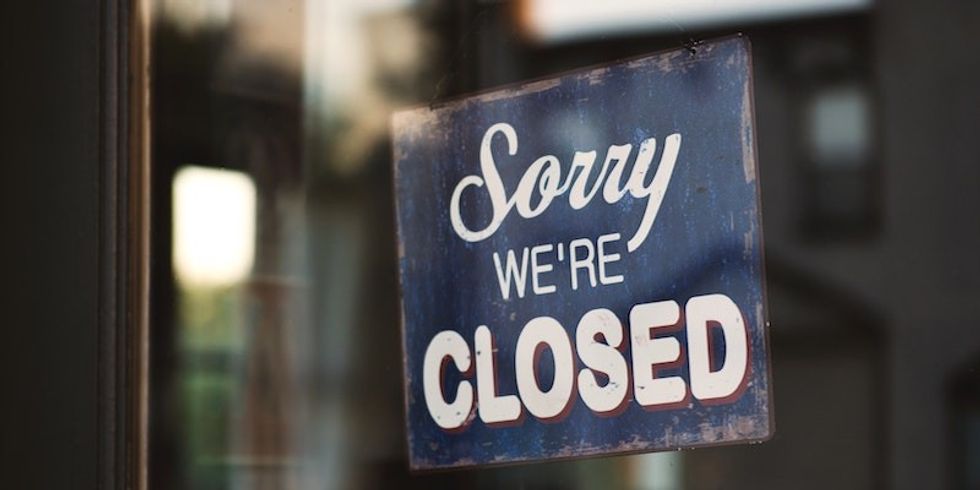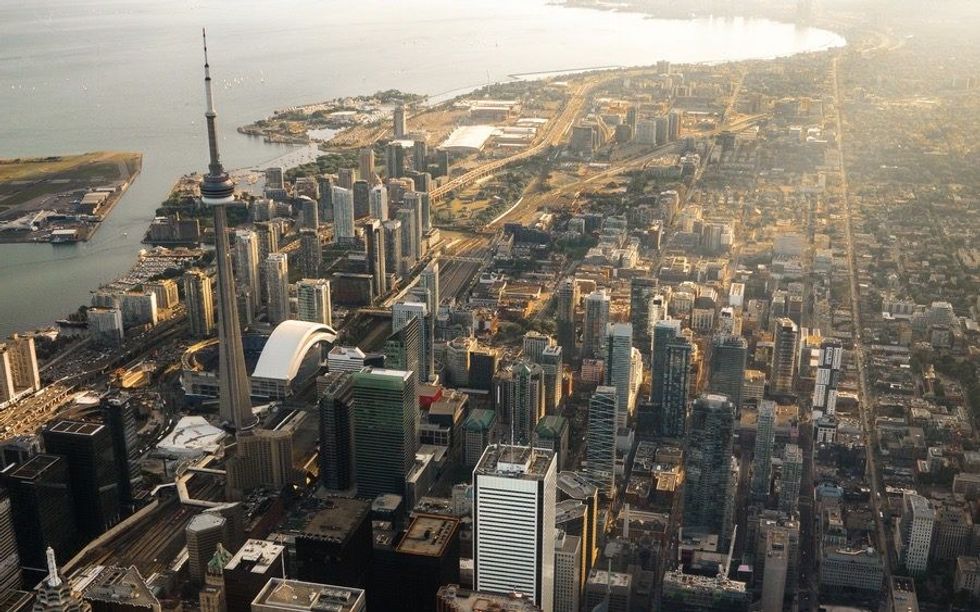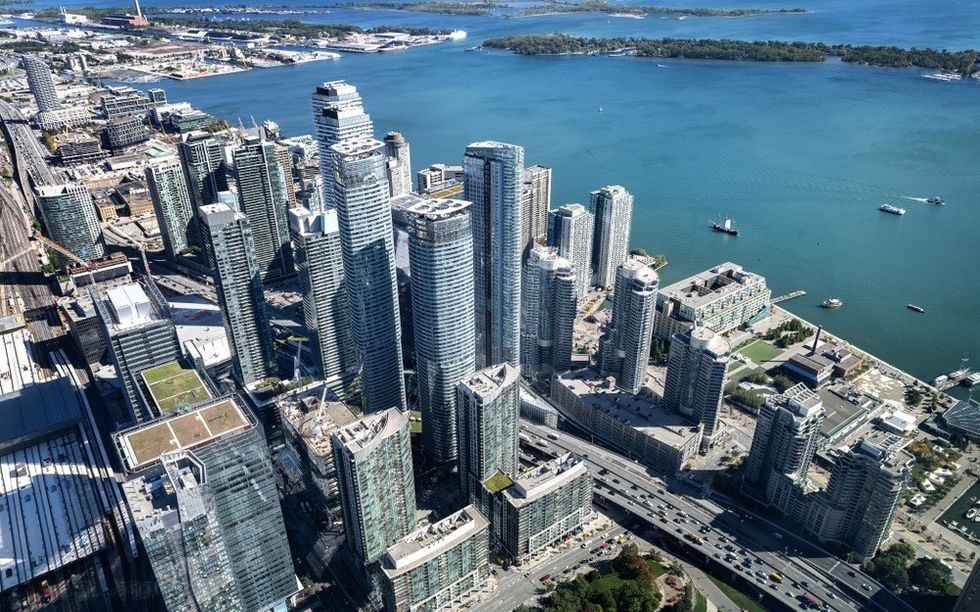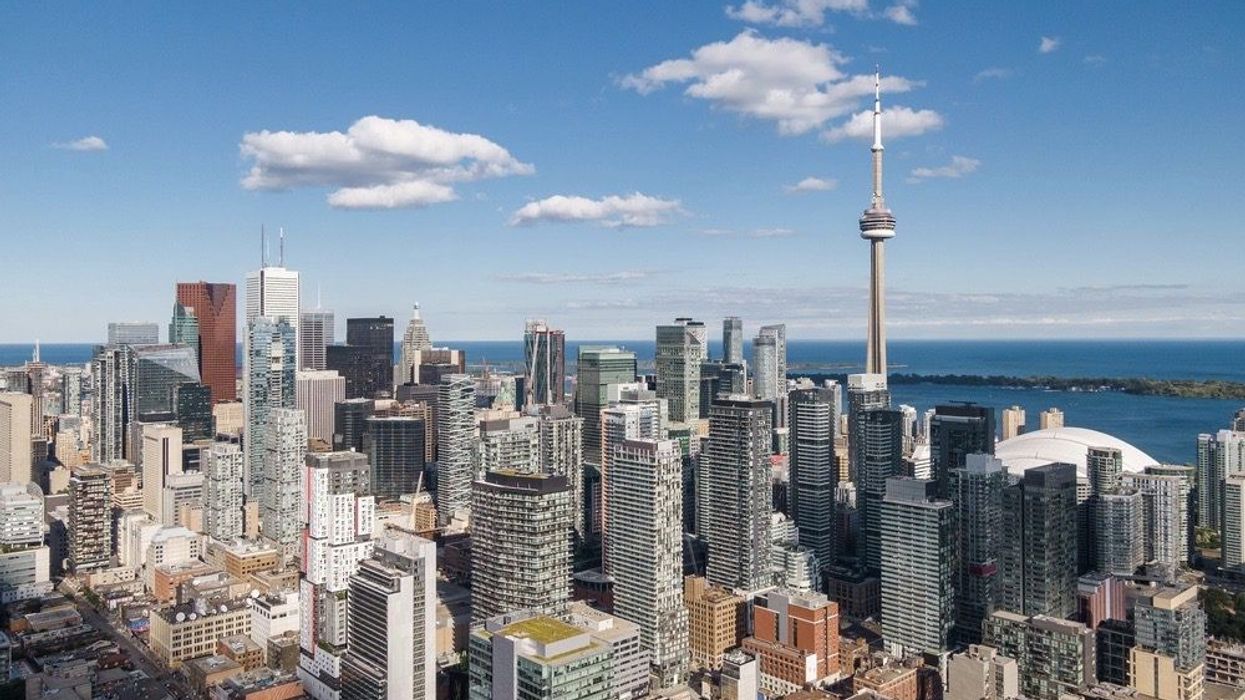All it takes is yet another lockdown to really drive home the blow of how expensive it is to live in Toronto.
If Toronto’s current restrictive measures -- which reduce restaurants to takeout service only, shutter gyms, and close movie theatres (to name a few examples) until at least January 27 -- continue throughout the winter, the stark reality is that we could see a lot more evictions across the city.
And, if last year is any indication of how this year will play out on the lockdown front, it could be some time before Toronto residents or visitors can take a seat inside a restaurant, comedy club, or movie theatre (here’s to really hoping that’s just my PTSD-filled self fearing the worst).
For Nicki Laborie, owner of Toronto restaurants Bar Reyna and Reyna on King, closing her restaurants and temporarily laying off her staff hit even harder this time around, compared to the province's multiple lockdowns that came before it.
“In terms of my team, I was heartbroken. I actually shed tears this time and felt anger and frustration beyond explanation,” says Laborie of the new restrictions. “I chose to keep the management team on salary because reopening two restaurants with little to no management was very difficult, given that 40% of our industry has left. I also once again gave our teams all the wasted food. But I worry about them -- I worry about the cook that has two jobs just to make ends meet and has now lost all income.”

CWLB Falls Far Short of a Living Wage
During previous lockdowns, laid-off Canadians were able to collect $500 pre-tax each week in financial aid through the Canada Emergency Response Benefit (CERB), which ended in December. This has now been replaced by the Canada Worker Lockdown Benefit (CWLB), which pays $300 per week -- or $270 after tax.
For some of Toronto’s restaurant workers, $270 could represent a typical night’s tips -- not to mention, they have their hourly wage on top of that. Many now face holiday bills and missed out on prime holiday money-making thanks to previous restrictions on capacity and operating hours that took effect on December 19.
Of course, gyms are also suffering during what would typically be the fitness industry's busiest time of year. Like Laborie, Julie Harrish, founder of Toronto’s 6IX Cycle + 6IX Flow fitness facilities, says laying off staff is gut-wrenching.
“Putting staff out of work is honestly the worst thing in the world especially when you know that what they are being offered is not even close to a living wage,” says Harrish. “CWLB will not cover basic rent, let alone OSAP payments (which are not paused), hydro, credit card interest, food, etc. for a month. I am extremely concerned for the livelihood and wellbeing of everyone in the fitness and hospitality industry if this lockdown continues past 21 days.”
During previous lockdowns, Harrish was able keep some of her staff on to help edit online content and manage retail sales using the wage subsidies, but with the continued burden on small businesses (“our loans and bills did not stop when our business closed,” she says) that isn’t something most are able to do right now, she says.
Toronto Renters Are More Vulnerable Than Ever
Toronto's rental market only compounds the hardship for those left unemployed. “Those with low or fixed incomes have been hit the hardest by COVID-19, not only by the virus, but also by increasing housing costs in the second half of the year,” says Paul Danison, Content Director for Rentals.ca. “And housing costs are projected to go up this year.”
The bottom line is that the federal benefits simply aren’t even close to enough in cities like Toronto.
It comes down to a matter of simple math. The CWLB offers $1,200 per month before tax. But the average rent for a one-bedroom apartment in Toronto will now cost you an average of $1,850. Then, there are bills and the cost to feed oneself and any dependents. Let’s not forget that the price of groceries is only rising across the country.
So, while $270 a week may (just barely) pay the bills in spots like Regina or St. John’s -- where the average price of a one-bedroom rental is $890 and $860, respectively -- this (measly) amount doesn’t cut it for Toronto residents with rent and other bills to pay.

“I am very concerned; $270 a week is no living wage and I truly hope the government increases it if this lockdown lasts longer than 21 days -- which if we look at our government’s past decisions, will likely happen,” says Laborie. “I wonder what would happen if they were all forced to live on $270 a week…. I can’t imagine Doug Ford switching places with a cook or server who is forced into losing their employment -- I bet he wouldn’t last a week.”
Ontario Rents Poised to Rise in 2022
Adding insult to injury for Toronto’s laid-off renters -- and employed renters, for that matter -- is the fact that Ontario’s year-long rent freeze has officially come to an end. Last year, Ontario passed legislation to freeze rent at the 2020 level for most rented units covered under the Residential Tenancies Act. That came to an end as of January 1, which means for 2022, Ontario’s maximum allowable rent increase under the provincial guideline is set at 1.2%.
However, this 1.2% guideline doesn't apply on new builds that are occupied for the first time after Nov. 15, 2018; landlords in the city's newer condos are free to raise the amount as they choose (even if it means as much as 12% year-over-year, like one renter friend recently experienced).
Last year, Toronto actually saw rents take a notable dip as lockdowns continued. But we can’t necessarily expect the same for the year ahead. The city's rents have made a quick recovery as of late and are approaching pre-pandemic levels. Furthermore, according to the latest Bullpen Research and Consulting and TorontoRentals.com Toronto GTA Rent Report, rents in the GTA are expected to increase as much as 11% this year. The report, however, was released before Omicron swept in to instil panic and lockdowns in Toronto.
After being let go from her job during Ontario’s first lockdown, executive office administrator Hannah Papernick applied for EI and was told she would receive CERB -- $2,000 per month before tax. Her rent at the time was a relatively affordable $1,500 per month. “CERB was not enough,” said Papernick. “It left me with little money to pay bills or purchase the essentials, like groceries and toiletries.”
As a result, Papernick had to look for another job. “I was left scrambling to find work, in a state of desperation, during a time when the entire city was closing, so nobody was hiring and it felt like the whole city had come to a halt,” says Papernick. “I was expected to put my best foot forward and elevator pitch myself for potential new employment opportunities while barely keeping my head above water.”
Perhaps more damaging than the financial stress, worrying about how bills will be paid and mouths fed just compounds stress levels at a time when mental health is particularly fragile. With the CWLB notably lower than CERB, there will be many more stressed-out and financially strapped Toronto residents. And, sadly, more evictions.
Evictions Likely to Rise as Protections Rolled Back
Ontario’s now-expired, pandemic-inspired ban on evictions covered official evictions. But unofficial evictions were still rampant throughout this time, representing some 80% of all evictions, says Geordie Dent, Executive Director of the Federation of Metro Tenants' Associations. “One thing you have to understand about evictions is that most of them are informal, so there is no paper trail or court dates. People get a notice and they move. This has happened a lot during the pandemic.”
While CERB helped to eliminate such evictions to some degree in some regions, says Dent, the program didn’t impact Toronto like it did other parts of the province where rents are lower. “A lot of people in Toronto were forced to move,” he said. Pandemic or not, evictions aren’t a bad thing for Toronto landlords in this climate. “An eviction means they can jack up the rent for the next tenant,” he adds.

Governments Must Take an Aligned Approach
If kissing lockdowns goodbye for good (you know, like we were promised with mass vaccination) is out of the question, the only solution is to raise the amount of the CWLB so that it would actually cover rent, utilities, and the basics needed to sustain oneself. Frankly, inaction could be catastrophic.
“Each level of government provides some assistance for those in need, but they do not work well together or intersect well or quickly enough to help people who need housing support right away,” says Danison. “In terms of ability to pay rent, I don't see an immediate solution for this quick lockdown, except for tenants to go to landlords and try to work out something.”
He adds that all three levels of government need to come together to address the supply issue and simplify the process for tenants and landlords. “The Landlord Tenant Board is overwhelmed,” he says, pointing to Toronto’s relentless supply issue as a root cause of soaring rents, and that rents and housing costs will only continue to increase with low vacancy rates.
“In the long run, creative solutions can be found, if residents, landlords, officials would realize this is a crisis, then come together to first help keep the most vulnerable in their homes and then go from there,” says Danison. “Toronto and GTA cities should be focused first on those in the most dire need and help them with some sort of short-term rental subsidy, and then offer whatever long-term services, training, or support is needed.”
Dent also points to the benefit of a potential payment for landlords whose tenants can't make rent. Another focus, says Dent, should be on "cracking down" on better preventing the spread of the virus in the first place -- especially in workplaces and residential buildings -- so that climbing numbers don't add ammunition for further lockdowns and subsequent lay-offs.
On this front, Dent brings up another important point: evictions spread COVID-19. “You don’t want a bunch of people moving homes during a wave,” says Dent. “You don’t want them going to the LCBO to pick up boxes, picking up their pre-move Tim Hortons, or interacting with movers, because they are potentially spreading the virus if they have it.”
So, any ensuing evictions will only perpetuate restrictive measures, says Dent.
The time for the government to act is now (or yesterday, but who's counting?). Dent isn’t holding his breath, however. “I don’t have high hopes. I don’t even think the province has talked to any renters groups at all,” says Dent. “I keep hearing that the province is literally sitting on billions. But their priority is big donors and industry heads. Everyone else is left over at the end.”
Yet, February 1 will loom like a daunting deadline for those who currently have no clue how rent will be paid with $270 per week if they want to eat.
Of course, we wouldn’t even be having a conversation about federal funds if a provincial lockdown wasn’t imposed in the first place. But that’s a whole (extremely maddening) issue altogether. ***pours wine***





















